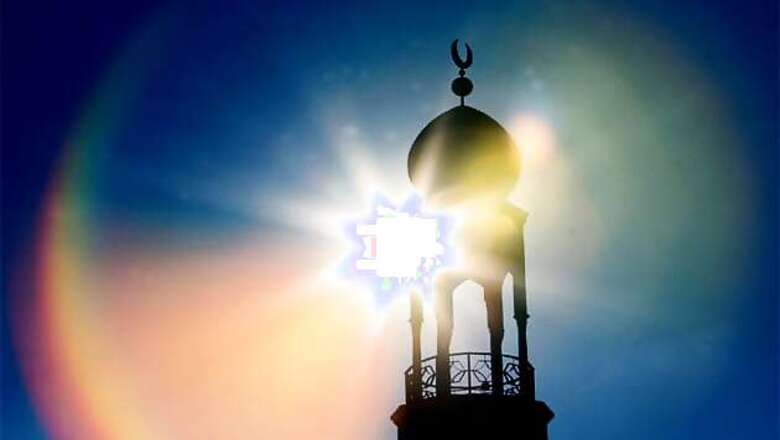
views
Paris: In its boldest development in a generation, the Louvre Museum has a new wing dedicated to Islamic art, a nearly €100 million ($130 million) project that comes at a tense time between the West and the Muslim world. Louvre curators tout their new Islamic Art department, which took 11 years to build and opens to the public on Saturday, as a way to help bridge cultural divides. They say it offers a highbrow and respectful counterpart to the recent unflattering depictions of the Prophet Muhammad in Western media that have sparked protests by many Muslims.
Still, one of the Louvre's own consultants acknowledged that some Muslims could be "shocked" by three images of Muhammad with his face exposed in the new wing. Many Muslims believe the prophet should not be depicted at all — even in a flattering way — because it might encourage idolatry. The galleries provide a needed showcase one of the West's most extensive Islamic art collections, some 18,000 artifacts that range from the 7th century to the 19th century.
But the wing does not dwell on the old: it is housed under a futuristic, undulating glass roof designed by architects Rudy Ricciotti and Mario Bellini that has garnered comparisons to a dragonfly wing, a flying carpet, even a wind-blown veil. It marks the Louvre's biggest change since I.M. Pei shook up the famed Paris museum with his iconic glass pyramid in 1989.
France, meanwhile, is bracing for possible disruptions at embassies across the Muslim world on Friday after the French satirical weekly Charlie Hebdo published lewd caricatures of Muhammad on Wednesday. The publication raised concerns that French interests could face violent protests like the ones targeting the United States over a video produced in California that ridiculed the prophet. Those protests, which continued on Thursday, have left at least 30 people dead.
But could the new museum wing actually be good timing? The Louvre collection's mission is to foster understanding between the West and the Islamic world. Instead of highlighting Islam as one united religion, it celebrates the secular, tolerant and cultural aspects of different Islamic civilizations.
Sophie Makariou, head of the Louvre's Islamic art department, hopes the new wing will teach lessons about tolerance and diversity. "I like the idea of showing the other side of the coin," said Makariou, standing at a wall decorated with colorful, flower-patterned tiles from the Ottoman Empire in the 16th century. "We are talking about a diverse world that goes from the Atlantic, Spain and Morocco to India. It brings complexity. We are suffering from simplistic views on the Islamic world. (Some) would make us believe that there is just one Islam, which is just not true," she said.
Indeed, an intricately engraved bronze lion from 13th century Spain stands proudly alongside a rare modeled-stucco head of a prince from medieval Iran. The works presented were made not just by Muslims, but by Christian and Jewish artists as well.
In a sign of the political importance of the new collection, French President Francois Hollande attended an opening ceremony on Tuesday, calling it a "political gesture in the service of respect for peace." Saudi Prince Waleed Bin Talal and the president of Azerbaijan accompanied him. "The best weapons for fighting fanaticism that claims to be coming from Islam are found in Islam itself," Hollande said. "What more beautiful message than that demonstrated here by these works?"
The Louvre opened a department of Islamic art in 2003, under former President Jacques Chirac, who said he wanted to highlight the contributions of Muslim civilizations to Western culture. Chirac, who vigorously opposed the U.S.-led invasion of Iraq, constantly pushed for the idea of a "dialogue of cultures" to break down misunderstandings between the West and the Muslim world.
The collection's organizer decided to include images of Muhammad to show the evolution of Islamic art. In one instance, he appears as a veiled character in a 16th century manuscript. And in a multimedia projection, Mohammad is shown in three separate images with his face exposed — something almost unheard-of today.
"I think Muslims will be shocked," said Charlotte Maury, a historical consultant for the Louvre. "That's why we put it on the side." "We felt we had to use them, to illustrate (Islamic) history the way we see it," she said.
Maury said Muhammad's face was only covered up in Islamic art starting in the 15th century, when Muslim scholars decided to interpret the veiled figure as a more respectful image. The Quran has no direct prohibition against depicting Mohammad, though it does contain verses saying that those who insult him are cursed.



















Comments
0 comment